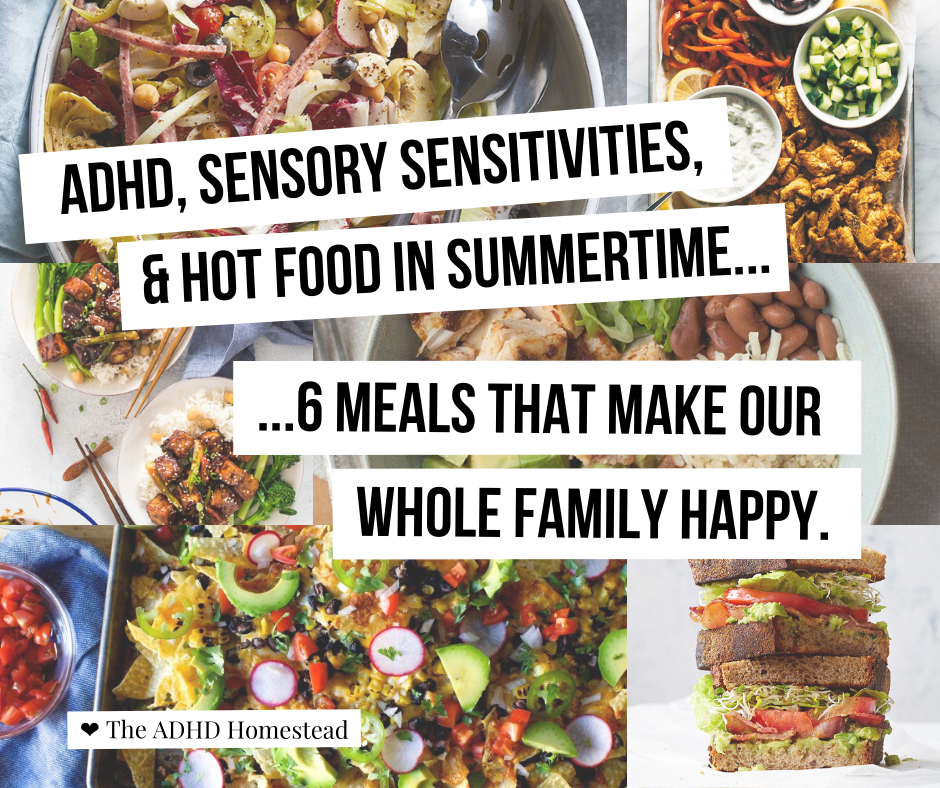We ADHDers can have a lot of sensory sensitivities. They vary from person to person and can include just about anything, from itchy tags to the wrong color light bulbs. My husband dislikes hot food when it’s hot outside, making summer meal planning kind of a challenge.
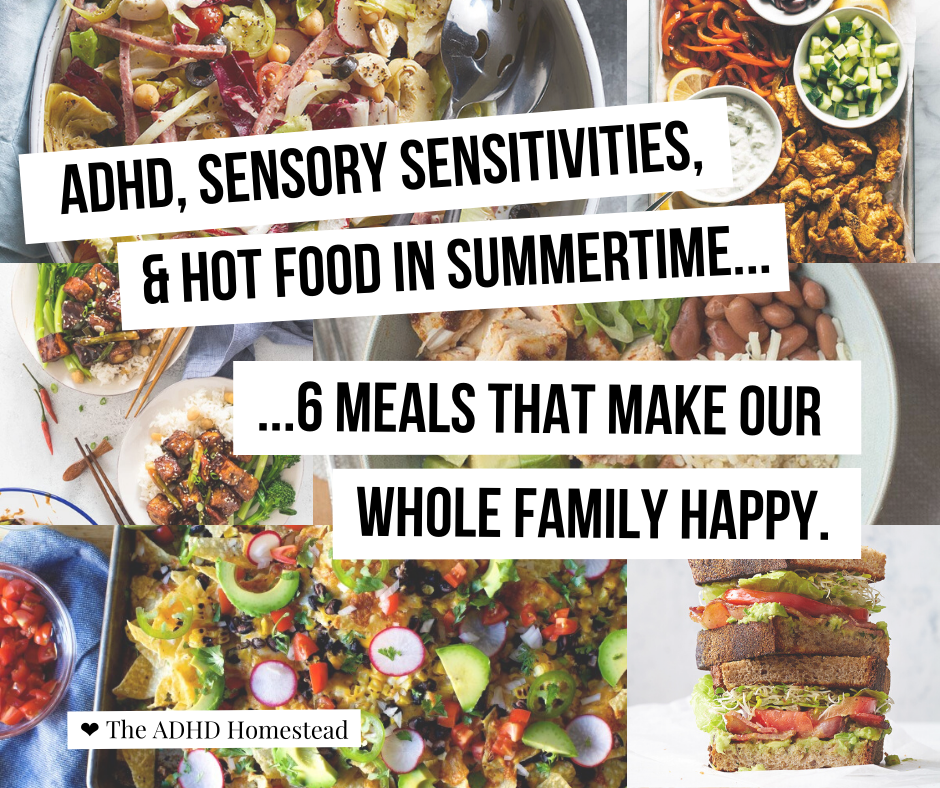
The thing is, ADHD sensory issues are more than personal preference. We aren’t (just) being picky or difficult. Triggering these sensitivities can cause truly unbearable, skin-crawling discomfort. This has real health impacts when you have a family member who won’t eat. My husband solves the hot-food problem by either:
- failing to notice he’s hungry and not getting enough nourishment, or
- binging on snacks before bedtime.
Meanwhile, I need hot dinners to stay sane. Without cooked food I get really cranky, really fast. I often like my food so hot, others won’t even touch it. Maybe that’s my sensory sensitivity.
A meal planning compromise exists, but I’ve had to search for it. Cold meals with the right cooked components can satisfy me — at least in the short term — and my husband will accept hot food in certain contexts.
Finding these compromises has taken some trial and error. Given the hot start we’ve had to summer around here, I thought it a good time to share what we’ve learned.
6 hot-weather meals that leave our whole family feeling satisfied
Build-your-own burrito bowls
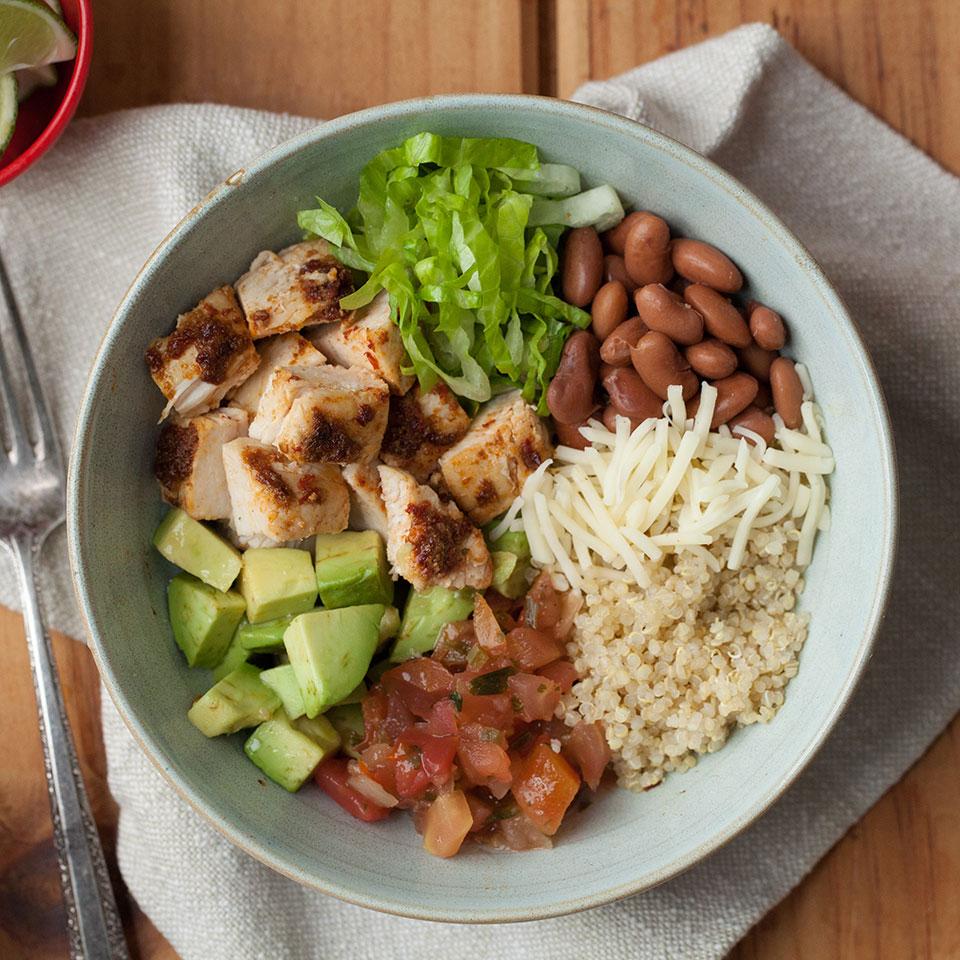
I talk more about burrito bowls in the next section, but allow me to say this right here: they are one of our family’s best compromise meals. Their exact ingredients may vary depending on season and food availability, but we often include a selection of the following:
- Tri-color quinoa (which most of our household seems to prefer to my usual standby of brown rice)
- Bite-size squares of seasoned, crispy seitan or super-firm tofu (can substitute chicken)
- Beyond or Impossible ground meat substitute (can use real ground meat), browned with peppers and onions and flavored with a packet of taco seasoning
- Pinto beans straight from the can, tossed in chili powder, olive oil, salt, and a little squeeze of lime
- Sliced radishes (pickled or fresh)
- Thin-sliced scallions
- Shredded cheese
- Sour cream
- Salsa
- Fresh diced tomatoes
- Hot sauce
- Shredded lettuce, tossed with oil, lime juice, and maybe a little chili powder
Sometimes I get fancy enough to include soft or hard taco shells, but I prefer bowls. They’re easier to make and less messy to eat. I prep the ingredients and put them all out on our kitchen island, then summon the family to grab a bowl and assemble their own dinner.
The beauty of this is you can grab a lot of hot components if you want them — and I do — but there’s also a wealth of room-temperature and chilled options.
Sheet-pan chicken pitas
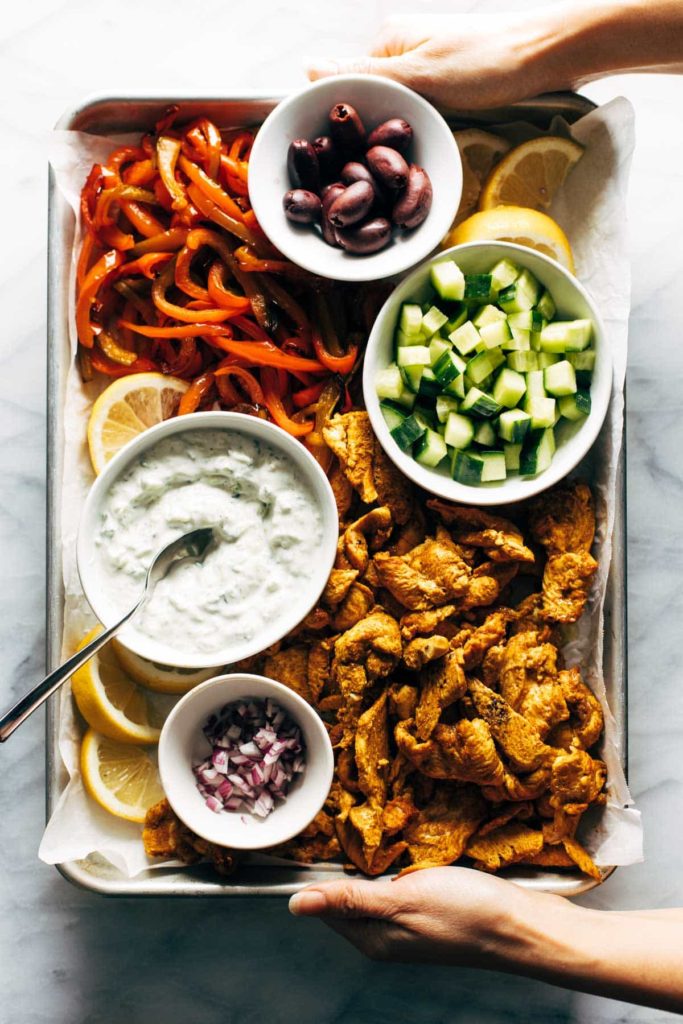
These function very similarly to burrito bowls in that they allow each person to assemble their own unique combination of foods. The flavorful chicken satisfies my need for a “real food” meal. The finger-food platter tricks the rest of the family into thinking I’ve allowed them to eat snacks for dinner. Tzatziki, with its tangy yogurt and hydrating cucumber, feels especially luxurious on a summer evening. Everyone wins!
Quinoa antipasto salad
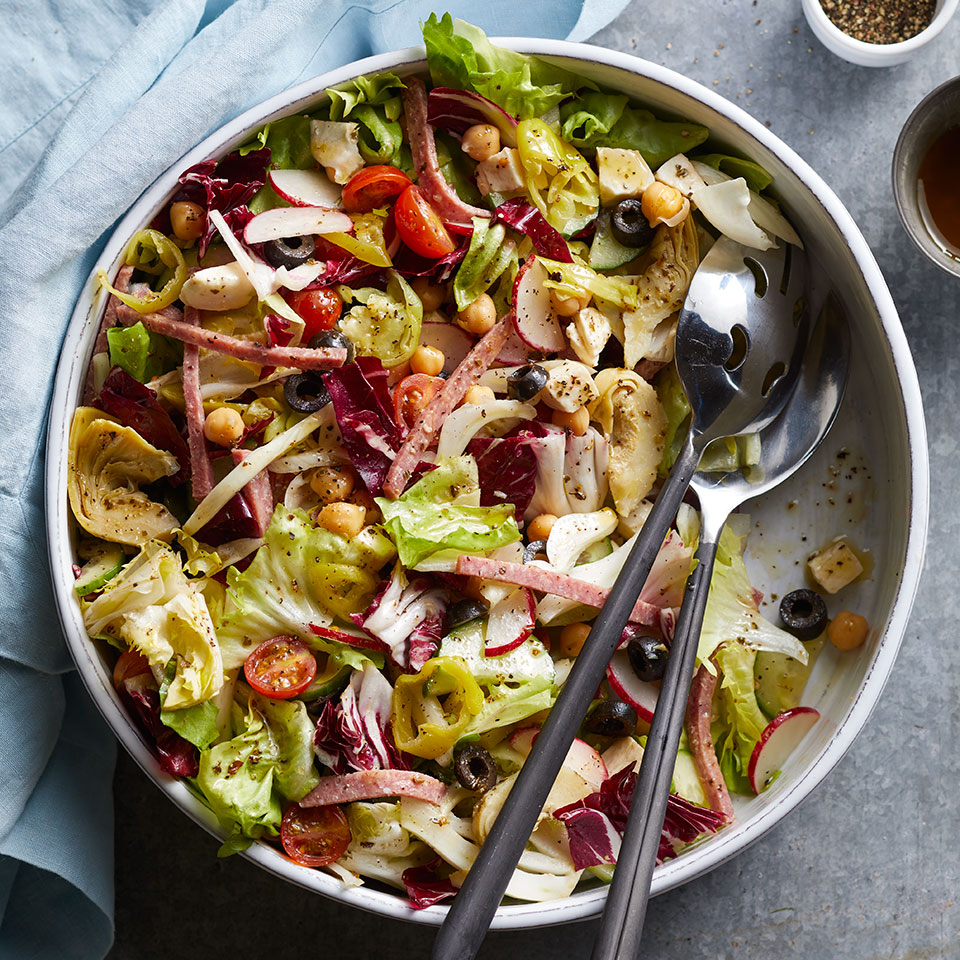
Like many recipes, I can’t remember ever making this one exactly as written. I may have done it once, but since then I’ve tried countless variations. My favorite is to do something similar to what you see in the picture but replace the greens with quinoa. Sometimes I include the greens but keep them separate, making a layered salad plate with quinoa on the bottom, followed by a layer of greens, then the rest of the salad.
For some reason the quinoa, especially when served warm, gives this dish enough texture and heartiness to make me feel like I’ve eaten a meal. If I have a loaf of sourdough bread sitting around, I’ll serve it with that to make it even more filling. (I also — sorry to all the keto acolytes out there — need a certain amount of carbs in my life. Otherwise I never feel satisfied and tend to overeat and snack like crazy.)
I’m categorically opposed to salad for dinner. It makes me cranky. And yet, I’ve found little tweaks — usually in the form of quinoa and/or a grilled protein — can occasionally make it work for me.
General Tso’s seitan (or tofu, or chicken, or whatever)
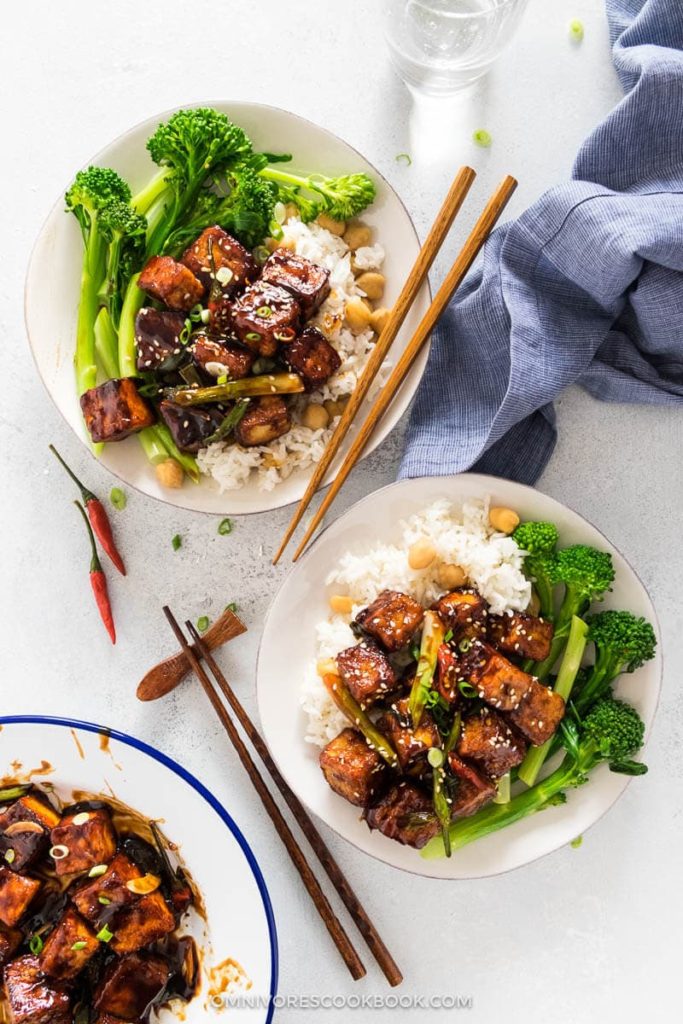
Once upon a time, I loved getting General Tso’s tofu from the Chinese takeout a few blocks from my house. Then it became unreliable. Sucker for intermittent reinforcement that I am, I continued to order it every once in a while and hope for the best. The day I bit into my tofu and tasted rancid fry oil, I committed fully to my quest for the perfect homemade General Tso’s.
Eventually I came across The Omnivore’s Cookbook, a food blog that promised to “make Chinese cooking easy.” Following the author’s instructions for General Tso’s tofu, I got very close to the heavenly experience I so desired.
Then I tried it with seitan.
In pre-pandemic times I bought one variety of tofu with unfailing loyalty: Wildwood high protein. It was the least spongy, most structurally sound tofu I’d ever found. Then the coronavirus disrupted supply chains of toilet paper, bread flour, and apparently my favorite tofu. Four months later, I still can’t find it but I no longer care. After failing to find a reasonably-sized package of vital wheat gluten, also due to weird pandemic shifts, I tried my hand at homemade seitan.
Reader, it was delicious. My husband, who usually has some textural qualms with tofu, told me this was my best General Tso’s yet. He also loves it even on a hot day, despite the fact that it is quite hot! I suspect this has something to do with the flavor profile of the sauce: full of umami but with abundant acidic flavors to lighten it up.
Plus, who can turn down Chinese takeout?
Nachos grande
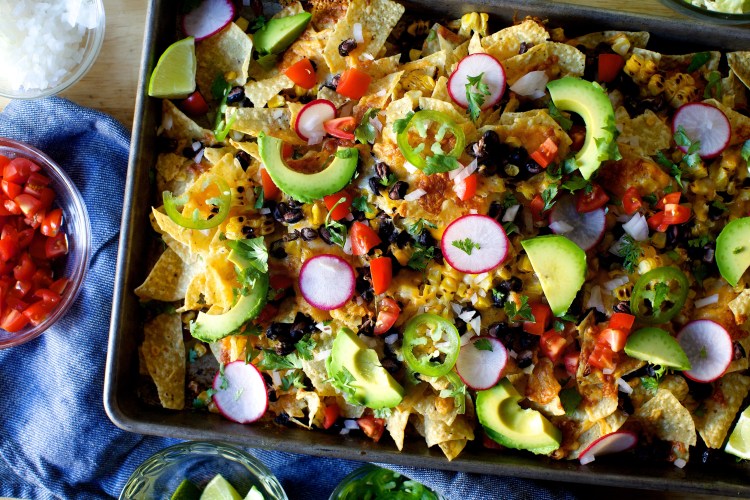
I’ve had a weak spot for nachos for as long as I can remember. Sometimes the key to successful accommodation is finding those weak spots and using them to give everyone a win. In other words: nachos are not at all a hot dinner, but I find them so irresistible I simply don’t care.
While I don’t advocate making beer and nachos into a full-fledged meal every night, I’ve done it with this recipe from Smitten Kitchen and I will most certainly do it again. Throw enough beans, veggies, and corn on those babies and you can absolutely call it dinner.
BLTAs
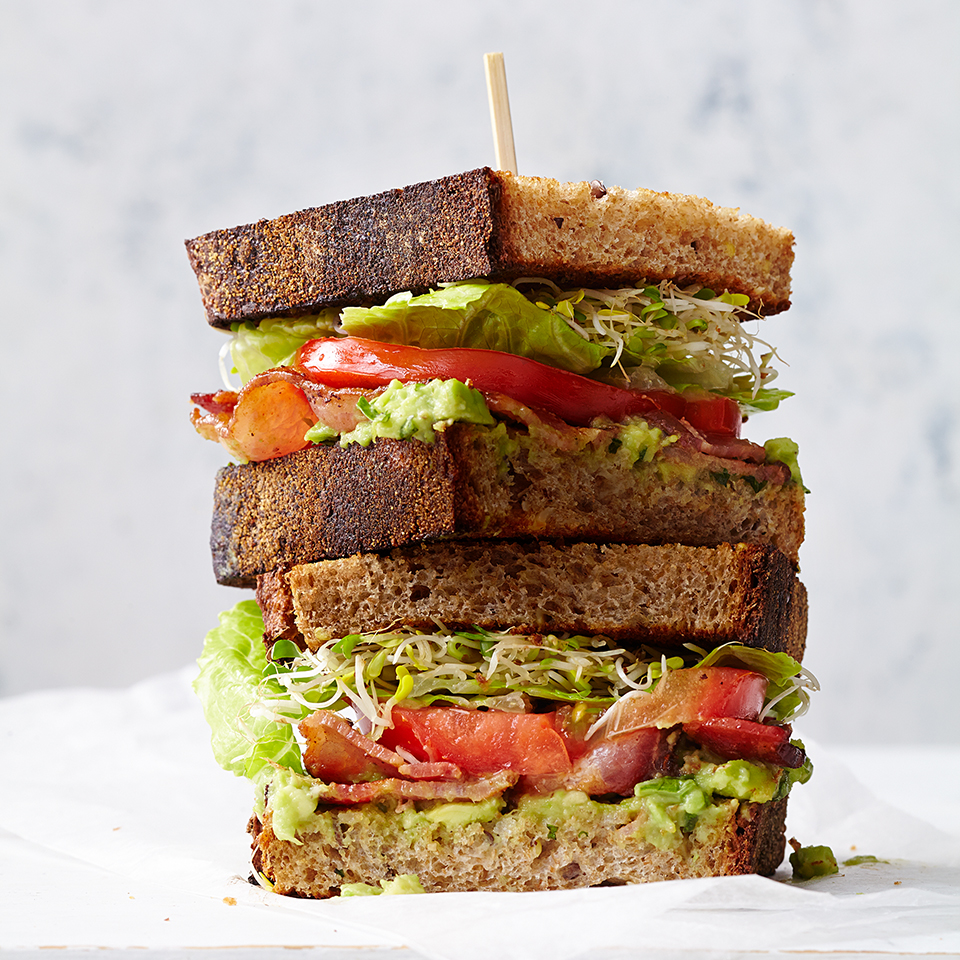
BLTAs, or BLATs, if you prefer, were one of my first cold-dinner go-tos. I think I discovered them via a recipe in EatingWell Magazine but really they’re just sandwiches with bacon, lettuce, avocado, and tomato with your choice of dressing.
Something about them feels substantial. They pack a satisfying combo of crunchiness, chewiness, lightness, and umami. I also like to indulge with some homemade wedge fries if I have a potato hanging around. Fries can be consumed burn-your-mouth-off hot, yet they feel like a special treat to all eaters.
While I won’t downplay the bacon — or fakin’ bacon, if you like — in these sandwiches, I suspect the avocado elevates them to meal status. I consider fat an essential part of my diet, and the healthy fats in avocados can help you feel sated for longer. Here, they add weight to an otherwise snack-y dinner.
How I accommodate hot-food aversions
Over many years of experimentation, I’ve learned my husband doesn’t hate all hot food in the summer. He’ll eat a surprising variety of it as long as I avoid some key triggers. The biggest aversion factors I’ve discovered are texture and acid balance.
Texture
My kiddo and I tend to enjoy a lot of one-bowl meals: black beans and rice, pasta with bolognese sauce, curries ladled over rice, that kind of thing. However, these dishes mix in the bowl to create a uniform texture my husband finds unpleasant. This holds true for him year-round, but on a hot day it becomes insurmountable.
When I serve hot meals, I keep the hot components separate from the cold. Rather than cook all the beans and veggies down into a sauce in the slow cooker for black beans and rice, I use the beans straight from the can and toss them with a few seasonings. I grill a protein separate from the beans. I toss salad greens in a chili-lime dressing and put individual veggies on the side. Then I leave everything separate so people can take as much or as little of each component as they want, then combine those ingredients to suit their preference. This allows me to have my hot food while avoiding the “blah” texture that feels unpalatable on a hot day.
Acid balance
Careful attention to acid will elevate your cooking from okay to great. I never really thought about it until I read Samin Nosrat’s book Salt Fat Acid Heat. When I reached the section on acid, I had a revelation: my husband is way more sensitive to acid balance than I am.
The right acid will brighten up a dish and keep it from feeling too heavy. Mexican food provides a great example because it has lots of balancing acids: sour cream, hot sauce, salsa, a lime wedge garnish to squeeze over your food just before eating. This explains part of my burrito bar’s success. Italian dishes can benefit from a dash of fancy olive oil drizzled over just before serving. Grilled asparagus or zucchini will come alive when you squeeze fresh lemon juice over it.
Summer naturally lends itself to brighter flavors. Every culture’s cuisine has native acids you can use to lighten up the flavors. I’ve had a lot of fun experimenting with tzatziki sauce, yogurt, vinegars, olive oil, and citrus. I’ve also brought back some meals I thought were off the table for summer. All they needed was a little acid adjustment.
It’s all about experimentation
Most of all, over the years I’ve learned to continue experimenting and seeking compromise. Early in our marriage, I tried to accommodate my husband too much by making a full week’s menu of sandwiches, salads, and chilled soups. This eventually drove me out of my mind. In the middle of a weekday afternoon I stood up from my desk at work, announced “I can’t take this anymore!”, and marched to a nearby cafe to purchase a greasy, piping-hot breakfast sandwich. Family cooking needs to account for everyone’s needs, not just the most persnickety eater’s.
Despite our seemingly disparate summer cuisine preferences, there are plenty of meals we both enjoy. It’s just a matter of finding them. That becomes easier when I experiment freely and take notes on what works (and what doesn’t). Armed with past experience — which I do need to write down, lest I forget it the very next week — I can tweak recipes to make them a hit with everyone. No one needs to give up their favorites or force down a food that nauseates them, and everyone can finish dinner feeling happy and satisfied. It just takes a little investigation.
Do you have sensory issues with food? Have they ever clashed with the rest of your household’s preferences? How did you compromise?
Hey there! Are you enjoying The ADHD Homestead?
Here's the thing: I don't like ads. I don't want to sell your attention to an advertising service run by the world's biggest data mining company. I also value my integrity and my readers' trust above all, which means I accept very few sponsorships/partnerships.
So I'm asking for your support directly. For the cost of one cup of coffee, you can help keep this site unbiased and ad-free.
Below you will find two buttons. The first lets you join our crew of Patreon pals and pledge monthly support for my work. Patrons also have access to my Audioblogs podcast. The second takes you to a simple donation page to pledge one-time or recurring support for The ADHD Homestead, no frills, no strings. Do whichever feels best for you!

